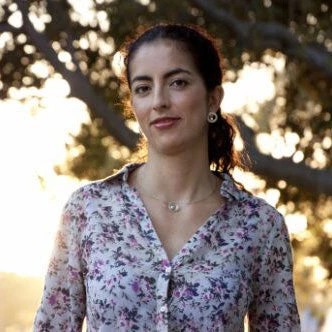 Lluvia en San Vicente Pacaya, Guatemala. Maria Fleischmann / Banco Mundial
Lluvia en San Vicente Pacaya, Guatemala. Maria Fleischmann / Banco Mundial
“In Mexico, they kidnapped many Hondurans, South Americans and Haitians who were with us on the train. They [the cartels] put a gun to my head. … With the coyotes it is easier, but only if you have money. Women are raped and men are beaten.” This is the terrible account of one of the thousands of migrants seeking to reach the United States.
What leads thousands of people to travel almost 4,000 kilometers to risk their lives in uncertain conditions? Are there alternatives? What initiatives can help make this migration successful and reduce the vulnerability of Central American migrants and refugees?
A team of World Bank specialists from the global practices of Poverty and Equity, Social Protection and Employment, and Sustainability and Social Inclusion is conducting several studies to try to answer those questions. The studies will inform the design and implementation of programs and public policies to maximize net gains from migration and improve the well-being of people in the countries of origin and destination.
Who migrates?
Approximately 6.2 million Central American and Dominican migrants live outside their countries. It is a mixed migration that includes economic migration, migration motivated by family reunification, and even the forcibly displaced . Many of them migrate illegally and fall prey to traffickers or “coyotes.”
According to official figures from the United States Customs and Border Protection Agency, in 2021, approximately 44 percent of migrants from Guatemala, El Salvador and Honduras were adults in search of opportunities, 40 percent were families in search of a more dignified life, and about 16 percent were unaccompanied minors (that is, 122,000 children and adolescents).
Central American migrants face different types and degrees of vulnerability. Among the most vulnerable are the more than 300,000 forcibly displaced persons, the 580,000 refugees and asylum seekers, the 90,800 stateless people, and sexual and ethnic-racial minorities. For their part, economic migrants face vulnerabilities related to their working conditions.
Preliminary results of the studies indicate that Central American migrants are mostly young people with considerable potential, who play a key role in the development of their countries of origin and destination. For example, Central American migrants who recently arrived in the United States are 26 years old on average, and 70 % have at least a high school education.
Why do they migrate?
A preliminary analysis of the study findings indicates that migration from Central American countries is related to three factors:
- A lack of economic opportunities and low living standards;
- Extreme weather events related to climate change; and
- Violence.
Individuals from the poorest communities tend to migrate. In Honduras and El Salvador, migration is related to landslides and droughts, while in Guatemala it is associated with climate risk in general. Preliminary results on violence are less conclusive. Although in Honduras extortions are associated with a greater probability of migrating, these results are inconclusive.
These results underscore the need to improve the socioeconomic conditions of Central American countries through inclusive and sustainable economic growth that guarantees quality employment.
How can countries improve the migratory experience to benefit all parties?
First, it is necessary to facilitate a safe, informed migration experience: in 2021 alone, more than 5,755 Central American migrants died, while cases of human rights violations skyrocketed to levels similar to those of countries with active conflicts.
Study findings indicate that legal temporary migration programs could contribute to the economic development of both origin and destination countries through capacity-building and the generation of productive assets of migrants and their households. This is particularly true given the labor shortages in various sectors worldwide and the profile of those who migrate. Additionally, facilitating legal (temporary) labor migration mechanisms can help reduce irregular/illegal channels.
It is also necessary to collaborate with humanitarian agencies, NGOs and national and local public services to strengthen information mechanisms and comprehensive protection (beyond employment) along the migratory route . For example, in Honduras, two of every three migrants are women fleeing gender violence, poverty and inequality. However, the studies indicate that only 43 percent of care services for survivors of gender-based violence are accessible within a kilometer of the nearest migratory route.
Second, recent World Bank studies at the global level reflect the social and economic benefits of the arrival of migrants and refugees, especially when they are allowed to work and to enjoy freedom of movement and access to essential basic services in host communities. Thus, it is essential to understand and carefully analyze the conditions in which the communities of origin, transit, destination and return manage to integrate migrants to design effective, mutually beneficial programs throughout the migration spectrum.
Finally, multisectoral efforts that combine humanitarian response with development investments in countries of origin, transit, destination and return have proven highly effective . Those programs that benefit both migrants and host communities and that focus on economic and social integration, have successfully mitigated risks associated with large inflows of people and have maximized their social and economic contributions.
In the next installments of this blog series, the team will further examine what the World Bank is doing to support countries in their efforts to make migration a successful experience.




Join the Conversation